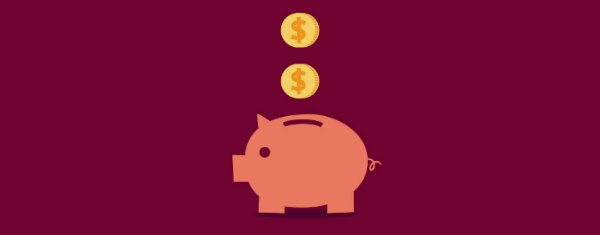Millions of people from all over the world are handing in their notices, waving goodbye to their cubicles, and trying to make it as freelancers. Designers, developers, writers, and consultants – these are real people leaving their 9-to-5s to pursue their dream careers.
Thanks to the internet, there are now more remote working opportunities than ever before. This means that the odds of success have never been more in your favor.
Of course, leaving behind a “secure” job will always involve some risk. Today, however, I want to minimize that risk by discussing six important steps for smoothly transitioning from full-time worker to freelancer. If you’ve always dreamt of a career in the world of freelancing, read on!
Word of Warning: Let’s Talk Timeframes

Image by MFBS / shutterstock.com
I wish I could sit here and tell you that the challenges faced by all wannabe freelancers were the same. It simply isn’t the case – some people face considerably steeper obstacles than others. For example, if you’re relatively fresh out of college, perhaps you have the option of moving back home with your parents. If so, you’re at a distinct advantage compared to someone with a mortgage and a family to feed.
That isn’t to say it’s going to be easy for anyone. Obviously, though, your personal circumstances will determine how quickly you can make your career switch. With fewer financial commitments, you can take far more risks to speed up the process.
For example, people with a lot of commitments – especially dependents – can ill-afford to quit their job until they know their freelancing business can keep them afloat financially. They aren’t going to gamble with their family’s wellbeing. If these people are prudent, they will look to secure a number of long-term clients before they consider handing in their notice. If they want to expand their skillset, they will do so on their own time, outside of business hours. All of this takes time.
However, people with little-to-no commitments can theoretically dive straight in. These people can quit their jobs at a moment’s notice (should they wish) and dedicate themselves to learning their trade and finding clients.
Again, it’s worth repeating that neither of these groups will find it easy, but the “no commitments crowd” are likely to achieve their goals more quickly, everything else being equal.
With this in mind, evaluate your personal circumstances, and always err on the side of caution. It might not feel like it right now, but there really is no rush to break free from your cubicle for your new career. It pays to take your time, get the foundations right, and make the move when you’re completely ready.
With that warning out of the way, here are six tips for transitioning from full-time to freelancer.
1. Reduce Your Monthly Outgoings
If I were to give one tip to would-be freelancers, it would be this: cut your monthly outgoings down to an absolute minimum. Again, this is tied to the fact that the lower your financial commitments, the lower the risk – with lower outgoings, you need less income to cover your expenses.
This is just plain common sense. If your monthly outgoings are, say, $2,500 per month, you need to create a roadmap to get to that $2,500 as quickly as possible. If you can reduce your outgoings to $1,500, that roadmap becomes significantly more straightforward.
In the early days, it’s generally easier to stay afloat by reducing expenses rather than increasing income – the income part will come later. How far you’re willing to reduce your expenditure depends on what kind of sacrifice you’re willing to make for your new career.
In my opinion, before you commit to freelancing, you should try to eliminate all but the essential expenditure. If you’re renting a lavish apartment, perhaps you could downsize? What about your car – do you really need something so flashy? Can you get by without all of those expensive dinners out?
In the short-term, sure, this might lower your quality of life. However, it’s a temporary drop. And, in my opinion at least, the short-term pain is well worth the long-term gain – just imagine escaping a lifetime of 9-to-5 drudgery!
2. You’d Better Start Saving

Image by Monkik / shutterstock.com
On one hand, you should be cutting your expenditure wherever possible to reduce your monthly commitments. On the other, you should be building a buffer to prepare for the possibility of a few lean months.
How much of a buffer do you need? Well, that all depends on how conservative you are. I recommend saving somewhere between three to six months’ worth of outgoings. (Hint: the more you’re able to reduce your outgoings by, the easier this amount is to save!)
Personally, I think that three months’ worth is plenty. After all, in those three months, you’ll slowly pick up clients and increase your income. If you’re too conservative when setting your goal, you’ll be forever saving – meaning you’ll remain stuck.
3. Secure Your First Client(s)
Time is one of the biggest restrictions faced by anyone looking to switch from employee to freelancer. You still have to put in your 40-odd hours at your day job, and after that, you’re exhausted. You don’t have enough time or energy to put in the same number of hours on top to kick-start your freelancing career.
Although you can’t work full-time hours on your freelancing gig while maintaining a job, you can still work some hours. Even just one or two hours at the end of the day is enough to refine your skills and build some income – also known as “moonlighting.”
Extra work might be the last thing you want to do after a long day, but it’s another barrier you’re just going to have to push through. If you’re committed enough to your career change, you’ll find the time.
Think: if you can secure just one client before you quit your job, you’re in a better position than if you’re starting from zero. Having business lined up will keep your financial worries at bay for longer, plus securing paying clients are a great thing for a freelancer’s confidence.
And, if you can secure two or three clients’ services before you quit, well, you’re starting from an even stronger position. In fact, the most prudent way to switch careers would be to replace your full-time income before you quit – although, as we’ve already mentioned, time may restrict you from managing that.
4. Prepare Your Workspace

Image by Iuliia Makarova / shutterstock.com
When I first started freelancing, I imagined myself working from coffee shops on a daily basis. In reality, it didn’t quite pan out that way. My fallback plan was to spend my time working in a shared workspace – and again, things took a different direction for me. Personally, I found coffee shops too noisy and the commute to shared workspaces a nuisance.
At first, I found this quite discouraging: I was way off with my vision for my freelance career. In the early days – when my confidence was already somewhat fragile – it was quite alarming to detour so far off-piste from my initial plan.
If I were to start over, I would spend a lot more time and energy researching my preferred workspace. It was naïve of me to make a serious life decision on a series of assumptions. If I’d spent a few days working in a coffee shop, I would’ve known that this setup was unfeasible for me. Learn from my mistake; give some serious thought to where you will spend your time working. Some common working arrangements are:
- Coffee shops
- Libraries
- Shared working spaces
- Home
- Some combination of the above
The logistical uncertainty at the start of my freelance career was one of the biggest (and most avoidable) obstacles I faced. These days, I work solely from home – I have a dedicated workspace set up, with everything organized just so. As a result, I feel far more at ease, and this setup is far more conducive to productive days.
5. Plan, Plan, Plan
As the old saying goes, “if you fail to plan, you plan to fail.” Although I believe a freelancer should always have some degree of flexibility, you should still spend time outlining a basic plan for your freelancing business.
Here is a basic blueprint of some things worthy of your consideration. To get the ball rolling, you can easily complete each task before you quit your job.
- Your services – what do you want to do? Will you specialize or offer all-round support? What niche will you target?
- Your ideal client – who are they? How will you target them? What is their hiring process?
- Your client strategy – how will you secure client’s business? If you need a website, have you built one? Have you started networking?
- Your required skills – do you possess them yet? If not, could you take a course?
- Your preferred workspace – covered above!
- Your required rate – how much do you need to earn per hour to make the career switch feasible? How can you increase your rates?
- Your obstacles – what do you envision your biggest obstacles to be? How will you overcome them?
The more thought and effort you put into your plan at the very beginning, the more prepared you’ll be for whatever life throws at you. Treat it as a business plan, and get everything down on paper.
While your plan should include your ultimate goals, you should also include a roadmap for getting there. Perhaps you dream of reaching $100/hour and having a stable of five regular clients. Unfortunately, unless you’re very well connected, you’re unlikely to land this rate for your first job. Securing several clients will take time, too.
With this in mind, try to include goals for your average rates and monthly revenues for Month 1, Month 2, Month 3, etc. This was one of my biggest motivators – for the first few months, freelancing was a struggle, but watching my business grow at my target rate reassured me that I was on the right path.
6. Don’t Burn Bridges

Image by Dmitry Guzhanin / shutterstock.com
The last thing I’d recommend is this: don’t burn bridges.
Even if you’re a highly skilled developer with a winning strategy, there is no guarantee that you’ll succeed. Your freelance career might start more slowly than you anticipate, or perhaps it never kicks into gear. There’s also the possibility that you don’t enjoy freelancing as much as you’d hoped.
In such a scenario, you’ll be grateful that you stayed on good terms with your previous employer, and you may be able to return to your former employment – or at least get a solid set of references.
Final Thoughts
Having been there myself, it really does make me sad when I hear someone complaining about how unhappy they are at their job. There are countless opportunities out there, though, if only you’re willing to take a chance and seize one.
These days, freelancing isn’t a pie in the sky goal for daydreamers. It’s a truly viable career alternative, which more and more people are waking up to – estimates classify around one-third of Americans as “freelancers” already.
Fortunately, here at Elegant Themes we already have an excellent community of freelancers. So let’s all help each other out! If you dream of freelancing, what’s holding you back? And if you’ve been there and done it, what strategies would you recommend to anyone starting out? Share your questions and experiences in the comments section below!
Thumbnail image via Bplanet // shutterstock.com









I’ve find the way out to become a freelancer. Thanks so much for the great article.
This article is worth pondering over especially for people who consider leaving their full time jobs.
Some of those steps mentioned, I would have never thought of. A well written article. I think it is especially true about the coffee shops, I could never work in one as I like to people watch too much!
This was very informative as I am questioning my next steps. I have a strong desire to do freelancing work as I have been doing it now for years but scared to make the leap into it full time.
Shaun, thank you for your article. It is well structured story, real story.
All what you said and other people mentioned in comments, I agree it could be hard and everyone need to understand why he/she makes it, for which reason.
Goo luck to everyone on its path
Thanks for motivating me through this informative article. I am getting bore with my jobs and want to build my career as a freelancer. This article give me a positive confidence. Thank you so much
Great article. I am wondering if someone can do a case study of someone becoming a free lancer from full time job.
I know the numbers might be different bc we all have diff situations and diff lifestyle. But that will help us (at least help me) gauge whether I am going on the right path.
One thing to add: be sure to create social strategy as not going into work everyday can really be isolating. Especially if you do a lot of calls/screenshares instead of in person meetings. Great article!
Here is another one: if you are working from home, try to establish a working routine.
NEVER WORK IN PYJAMAS! This is very important – however late or early it may be.
What’s your reasoning for not working in pajamas? It’s one of the best perks of working from home!
Great suggestions. Here are a few more:
– Right from the very beginning, get a separate credit card and bank account to keep track of business expenses and income. Talk to an account about what counts as a business expense.
– Get into the habit of tracking your hours daily, even if you are not being paid by the hour. Track your time for business development and admin (paperwork) as well as actual work. A simple spreadsheet is the only tool you need for this.
– Make a nice business card and start going to a lot of local networking events.
– Stay positive!
Good points. A couple others I can think of:
1. Tell your network you are now freelancing. They are your best bet for your first clients, and to help you spread the word.
2. Consider teaming up with other freelancers who have complementary skills. That makes the transition less daunting (and less lonely!)
great piece.
I am in the prudent team. with 4 kids to feed the decision to go freelance has never been easier. Even when my part time freelancing evidence demands that I should quit. making $150 some times
I suppose FAITH is all that is need to quench the doubts
Great article! I took the leap 4 years ago and it’s been a challenging and fun ride! Like you said, it’s different for everyone. I had no dependents, and no car so it was a relatively easy start. I got rid of my apartment and moved in my brother’s basement for a year so I could save up and practice my skills. Elegant Themes even featured my story here:
http://www.elegantthemes.com/blog/customer-spotlight/traveling-the-world-with-elegant-themes
As an added piece of advice (and an update to the Elegant Themes customer spotlight story), I transitioned from Paru Creative Services to Panama Creative Services (panamacreativeservices.com). Instead of competing in a rather large pool of designers in North America, I positioned myself as a PREMIUM graphic/web designer in a country in desperate need of not just good designers, but someone who delivered what they said they would deliver, on time and on budget. I targetted expat-owned businesses in the tourism and hospitality sector who were willing to pay US dollars for a premium service.
I found my audience and with a lot of hard work, word spread and now clients seek me out! Our services now also include drone video services, video editing and photography. My partner and I travel all over the country and stay at amazing places and go on fun adventures.
Pamela this is an interesting strategy. Congratulations…I would love to do what you are doing.
I decided to quit my full-time corporate job after a long recovery from a brain tumor surgery. It’s scary at first, but I’m happy with my choice.
I love that you mention planning. It’s so important yet people neglect it so frequently.
Lovely article. I’ll pin it for later.
Thanks for the nice article. Will for sure follow the steps in my new frealance venture!